It’s been a while since I’ve done one of these, so perhaps I should reintroduce the concept. Tom Spurgeon wishes some creator of comics a happy birthday, and if the stars (and my tastes) align properly, I recommend one of my favorite books by that creator in celebration. Today, it’s Philippe Dupuy, and I have to confess that my exposure to Dupuy’s work is somewhat limited, though I don’t think that’s really my fault.
 And honestly, when that work is limited to the excellent Get a Life (Drawn & Quarterly), I’m not going to complain. Get a Life collects some of the Mr. Jean comics created by Dupuy and Charles Berberian. Here’s a bit of what I said about the book when it first came out:
And honestly, when that work is limited to the excellent Get a Life (Drawn & Quarterly), I’m not going to complain. Get a Life collects some of the Mr. Jean comics created by Dupuy and Charles Berberian. Here’s a bit of what I said about the book when it first came out:
“Dupuy and Berberian, who divide their duties as creators equally, strike a wonderfully balanced tone in their stories. They’re witty without ever becoming arch and warm without being cloying. As Mr. Jean moves through the highs and lows of everyday life, he encounters friends, family, and neighbors who all provide distinct comforts and frustrations. Chance encounters trigger memories that can be both painful and nostalgic. Each story is a snapshot of a life that feels very real.”
Drawn & Quarterly has also published Dupuy and Berberian’s Maybe Later, a look at their creative process and private lives, and it’s also very good. I’d recommend that you start with Get a Life, and if you like it, follow up with Maybe Later. (Fans of hairy forearms might go right to Maybe Later. You know who you are.)
And since I’m on the subject, why not fold a bit of a license request into this birthday book entry? I’d love it if Drawn & Quarterly published more Mr. Jean comics. There seem to be at least seven volumes available in the original French, and I would love to see more published in English.
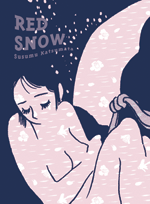



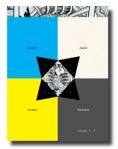
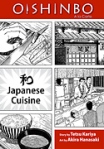


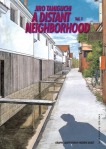
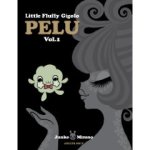
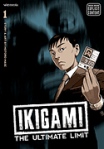
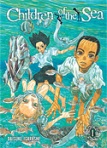
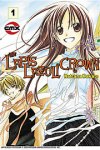

 In an entirely different category altogether, Marvel releases
In an entirely different category altogether, Marvel releases  And in a belated but welcome development, Tokyopop releases
And in a belated but welcome development, Tokyopop releases  It’s tough to pick a book of the week, as there’s interesting material in varied formats, but I ultimately have to settle on
It’s tough to pick a book of the week, as there’s interesting material in varied formats, but I ultimately have to settle on  Now, don’t get me wrong. I’m a fan of the books in Viz’s Signature line and an admirer of the imprint in general. I honestly can’t think of one I don’t at least enjoy. That said I do question the wisdom of unleashing quite this much product on the market at once. In addition to the aforementioned volume of Real, there’s
Now, don’t get me wrong. I’m a fan of the books in Viz’s Signature line and an admirer of the imprint in general. I honestly can’t think of one I don’t at least enjoy. That said I do question the wisdom of unleashing quite this much product on the market at once. In addition to the aforementioned volume of Real, there’s 
 I enjoyed
I enjoyed 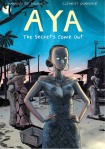 If you haven’t been enjoying Marguerite Abouet and Clément Oubrerie’s charming, multi-generational soap opera about life in the Ivory Coast during the 1970s, then you probably aren’t prepared for
If you haven’t been enjoying Marguerite Abouet and Clément Oubrerie’s charming, multi-generational soap opera about life in the Ivory Coast during the 1970s, then you probably aren’t prepared for  I really enjoyed Danica Novgorodoff’s mini-comic,
I really enjoyed Danica Novgorodoff’s mini-comic, 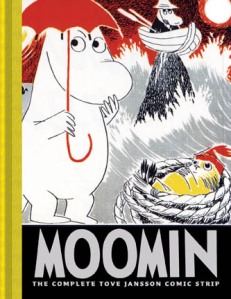 Helping people clean out their garage is not usually an enticing prospect, but Drawn & Quarterly has made it so with their
Helping people clean out their garage is not usually an enticing prospect, but Drawn & Quarterly has made it so with their 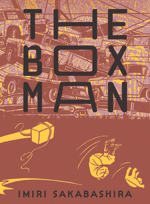 Okay, let’s flip back to page 261 for comics that interest me more viscerally, that is to say, comics that I’d actually like to buy. Drawn & Quarterly offers Imiri Sakabashira’s
Okay, let’s flip back to page 261 for comics that interest me more viscerally, that is to say, comics that I’d actually like to buy. Drawn & Quarterly offers Imiri Sakabashira’s  If you haven’t treated yourself to the first two volumes of Marguerite Abouet and Clément Oubrerie’s earthy, charming soap opera set in the Ivory Coast of the 1970s, then you should catch up, since the third,
If you haven’t treated yourself to the first two volumes of Marguerite Abouet and Clément Oubrerie’s earthy, charming soap opera set in the Ivory Coast of the 1970s, then you should catch up, since the third, 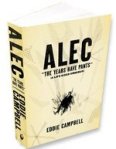 Top Shelf drops a massive omnibus, available in soft- and hardcover versions, of Eddie Campbells Alec comics, called
Top Shelf drops a massive omnibus, available in soft- and hardcover versions, of Eddie Campbells Alec comics, called  I saw this on Twitter yesterday, and there it is in the catalog. Viz releases two volumes of Inio (
I saw this on Twitter yesterday, and there it is in the catalog. Viz releases two volumes of Inio ( I automatically become nervous when buzz about a book reaches a certain pitch, so I’m glad I read a comp copy of David Small’s
I automatically become nervous when buzz about a book reaches a certain pitch, so I’m glad I read a comp copy of David Small’s 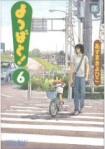 Last, but certainly not least, Yen Press brings boundless joy to the world (at least the world occupied by people with good taste) by releasing the sixth volume of Kiyohiko Azuma’s hilarious, completely endearing
Last, but certainly not least, Yen Press brings boundless joy to the world (at least the world occupied by people with good taste) by releasing the sixth volume of Kiyohiko Azuma’s hilarious, completely endearing 
Upcoming 10/7/2009
This week’s ComicList has some welcome, off-the-beaten-path items, so let’s dig in.
The arrival of one book from Fanfare/Ponent Mon is a welcome delight. The arrival of two seems positively decadent, but that’s what they do, and both are from master illustrator Jiro Taniguchi. Which excites you more will depend on your taste for Taniguchi. Summit of the Gods, about fateful trips up Mt. Everest, is in his man-versus-nature vein, like The Ice Wanderer and Quest for the Missing Girl. A Distant Neighborhood is more slice-of-life, kind of like his story in Japan as Viewed by 17 Creators or The Walking Man (if it had a plot). I picked up the first two volumes of A Distant Neighborhood at Small Press Expo and can heartily recommend it. I’ll cover it in more depth later, but it’s about a middle-aged man who wakes up as his teen-aged self shortly before his father’s disappearance.
I’ve already written about The Zombie Survival Guide: Recorded Attacks (Random House), mostly for its weird crediting of author Max Books and illustrator Ibraim Roberson on the review copy I received and the web listing, some of which seems to have been fixed. Brooks inserts zombies into various, far-flung scenarios – the colonial Caribbean, a Foreign Legion outpost in northern Africa, even pre-history – offering a faux-anthropological examination of zombie encounters through history. Again, it’s clever, and Roberson draws the heck out of it. I’d recommend it for zombie fans looking for a marginally fresh take on the (in my opinion) exhausted topic.
I tend to like the shôjo titles CMX publishes. I’ve heard effusive praise for Ken Saito’s The Name of the Flower, and I’ll track it down at some point, but in the meantime, I was glad to receive a review copy of Oh! My Brother so I could get a sense of Saito’s style. It’s got its strong points, mostly in terms of interesting characters and nicely delivered emotional moments. It’s about a girl who finds herself sharing her body with the spirit of her dead older brother, trying to help him with his unfinished business. That could have turned into something really unsavory, but Saito takes a sweet, sensitive approach to the material, thankfully. Some of the storytelling is a little sketchy, but there’s a nice, sentimental core to the work. I suspect Brother came before Flower, though I can’t seem to find any confirmation of that.
I couldn’t find it on Image’s web site with a sextant and a dowsing rod, but I’ll definitely pick up the second issue of Brandon Graham’s King City, as I really enjoyed the first. It’s a pamphlet reprinting of a book Tokyopop originally published as a paperback. I missed it in digest form, so I’m glad Image and Tokyopop are giving readers a second bite of the apple, particularly in a format that’s probably friendlier to Graham’s illustrations.